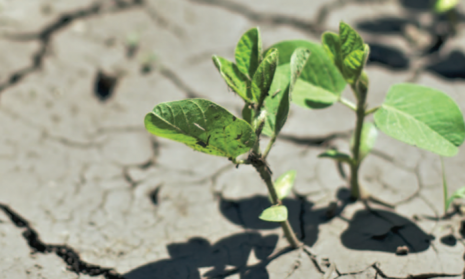Food for thought on farming systems

The nitrogen-cycle (N-cycle), discussed in detail in this Issue, is a key to the difference between “organic” and so-called “conventional” farming.
Synthetic N- fertilisers depend for their production upon the Haber process for the fixation of atmospheric N in the form of ammonia by reaction with hydrogen gas.
Despite the fact that 78.1% of the air we breathe is N, this gas is relatively unreactive because the molecule (N2) is held together by a strong triple bond.
Hence, the process requires a considerable amount of energy. In fact, 3–5% of world natural gas production, is consumed in the Haber process; about 1–2% of the world's annual energy supply (Smil 2001). The Haber process now produces 100 million tonnes of N fertiliser per year.
Nevertheless, this production is estimated to be responsible for sustaining one-third of the Earth's population (Hager, 2008).
The limiting factor is food energy, in the form of net energy for maintenance, physical work, growth and reproduction. If all world farming was organic it has been estimated that it could support a population of ca 4 billion (Benton et al., Goulding et al., Smil, all this Issue); but by 2050 the population is expected to exceed 9 billion.
Clearly, the provision of enough food for a population of this size cannot be achieved either by organic farming, or by current conventional production, restricted to the present total agricultural area and current technologies.
To meet their desires, especially for a high meat diet, the developed world imports exotic and other foodstuffs from developing countries, in some cases where many in those countries have insufficient food to sustain a healthy life themselves.
The articles in this issue seem to indicate that meet- ing the needs of an increasing population under an organic system would entail the destruction of forested and other areas of natural habitat.
This would partly compensate for the loss of sequestered carbon caused by the Haber process, but would, in turn, lead not only to a loss of vast forests, a valuable carbon sink, but the loss of biodiversity.
The land made available is still unlikely to meet requirements, partly because most forest soils are of poor quality.
Clearly what is required, is a carefully timed and “titrated” precision use of N-fertilisers in each field of each farm so that optimum amounts are used, spatially and temporally, to maximise output and minimise inputs, taking account of the marginal and expected effects on yield.
Ideally it should incorporate the needs for adequately feeding the world and also the effects on carbon and N balances, though this is impractical at present. These balances were not previously considered in this context for without reliable knowledge of rainfall and growing conditions in each field the objective will be difficult to achieve.
A uniformly higher standard of husbandry, improved technology and precision farming is required worldwide to increase agricultural out- put from approximately the same total area of land, to maintain biodiversity and not to increase greenhouse gas production.
The great virtue of the organic movement is that it has focussed attention on the importance of soil quality and organic matter, features recognised by the entire farming community for more that 150 years.
The importance of this has been known to the internationally famous Rothamsted Research Station since the 1850s (see this Issue).
The challenge is to increase output without further degradation of the farmed land, prevent further loss, or even to enhance, biodiversity and avoid taking more land into cultivation.
This is a significant challenge which will require a comprehensive integration and exploitation of technologies from several disciplines. Perhaps our best chance is the approach adopted by LEAF (Drummond, this Issue) which can provide the intelligent, integrated system needed, offering advantages over both the “Organic” and intensive farming systems for both output and maintaining biodiversity.
The evolution of a farming system should always be based on the most reliable evidence and experience, have a rational basis and the development should be logically argued.
References
Hager, T. (2008). The Alchemy of Air. Harmony Books, New York. ISBN 9780307351784.
Smil, Vaclav (2001) Enriching the Earth: Fritz Haber, Carl Bosch, and the Transformation of World Food Production, Cambridge, MA, The MIT Press, 2001 ISBN 0-262-19449-X
Download pdf
